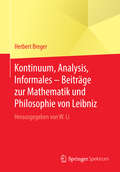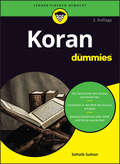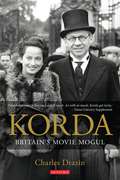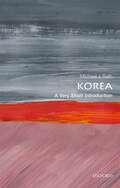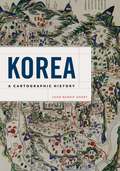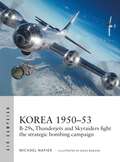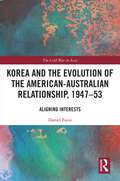- Table View
- List View
Kontingenz und Zeitlichkeit bei Schiller: Poetische Verfahren zur Beobachtung der Gesellschaft um 1800
by Markus KöberleinDie Arbeit befasst sich mit spezifischen poetischen und ästhetischen Verfahren im Werk Friedrich Schillers, mittels derer abstrakte, sich eindimensionalen Darstellungsweisen entziehende, gesellschaftliche Strukturen sichtbar gemacht werden. Als zentrale Analysekategorien dienen dabei unter Rückgriff insbesondere auf Niklas Luhmann die Begriffe ‚Kontingenz’ und ‚Zeitlichkeit’. Davon ausgehend wird auch die Bezüglichkeit der so dargestellten sozialen Zusammenhänge auf die Konstituierung moderner Subjektivität in Schillers historischen, ästhetisch-philosophischen und literarischen Schriften nachgezeichnet. Ziel dieses Vorgehens ist es, die in den Texten Schillers vorgenommene Dimensionierung der (Un-)Möglichkeiten modernen Denkens, Erlebens und Handelns auf neue Weise sichtbar zu machen und in den literarisch-philosophischen Diskurs um 1800, insbesondere in dessen Beobachtung der Gesellschaft, einzuordnen.
Kontinuitäten der Stigmatisierung von ,Asozialität': Perspektiven gesellschaftskritischer Politischer Bildung (Citizenship. Studien zur Politischen Bildung)
by Helga Amesberger Judith Goetz Brigitte Halbmayr Dirk LangeKontinuum, Analysis, Informales – Beiträge zur Mathematik und Philosophie von Leibniz: Herausgegeben von W. Li
by Herbert BregerDieser Band führt 16 Aufsätze von Herbert Breger zusammen, die um Leibniz‘ Arbeiten zur Mathematik und Physik und ihre philosophischen Voraussetzungen kreisen. Drei interessante und ungewöhnliche Aspekte stehen hierbei im Vordergrund: Kontinuum, Analysis und Informales. Leibniz' Kontinuum und seine Analysis sind gerade wegen ihres Unterschieds zur heutigen Mathematik interessant. Anhand zahlreicher Beispiele wird ferner die Frage nach dem Verhältnis zwischen der mathematischen Rationalität und der Kunst gestellt und die nach den engen Beziehungen zwischen Mathematik und Philosophie bei Leibniz erörtert. Es wird gezeigt, dass der Leibniz zugeschriebene Brief zum Prinzip der kleinsten Wirkung, der Anlass zu einem Streit zwischen Maupertuis, Samuel König und Voltaire wurde, eine Fälschung war.Das Buch erscheint im Leibniz-Jahr 2016, in dem auch der X. Leibniz-Kongress stattfindet.
Kooperation und Abgrenzung: Zur Dynamik von Intergruppen-Beziehungen in Kooperationssituationen (DUV Sozialwissenschaft)
by Dieter BeckKöpriyet: Republican Heritage Bridges of Turkey
by Hulya Sonmez SchaapKöpriyet: Republican Heritage Bridges of Turkey deals with bridges and the construction industry of Turkey during the foundation of the Republic between 1923 and 1940. This book provides a brief summary of the bridge history of the country, but the main focus is on the Early Republic Era. During this period, the bridge-building technique was reborn in a country undergoing a radical transformation. Turkey changed its ruling, secularized and changed its alphabet. In addition to detailed descriptions of bridges built during this period and of leading innovative engineers, this book provides a first documented overview of heritage bridges in Turkey, focusing on applied techniques known worldwide. Many bridges are documented for the first time in this book, and most of them are heritage bridges and provide significant value in terms of bridge-building technology and application of worldwide techniques. In the waning days of the Ottoman Empire, engineering projects in Turkey were often carried out through "privileges" by foreign companies. The technical personnel were also financed with foreign resources. With the new Republic, Turkey experienced a renaissance in many areas, including technology. This transition from technology import to development and use of local resources is described in detail. Köpriyet: Republican Heritage Bridges of Turkey provides a wealth of information and documentation on bridges in Turkey from an important era, and aims at those interested in bridge structures and structural engineering history.
Köpriyet: Republican Heritage Bridges of Turkey
by Hulya Sonmez SchaapKöpriyet: Republican Heritage Bridges of Turkey deals with bridges and the construction industry of Turkey during the foundation of the Republic between 1923 and 1940. This book provides a brief summary of the bridge history of the country, but the main focus is on the Early Republic Era. During this period, the bridge-building technique was reborn in a country undergoing a radical transformation. Turkey changed its ruling, secularized and changed its alphabet. In addition to detailed descriptions of bridges built during this period and of leading innovative engineers, this book provides a first documented overview of heritage bridges in Turkey, focusing on applied techniques known worldwide. Many bridges are documented for the first time in this book, and most of them are heritage bridges and provide significant value in terms of bridge-building technology and application of worldwide techniques. In the waning days of the Ottoman Empire, engineering projects in Turkey were often carried out through "privileges" by foreign companies. The technical personnel were also financed with foreign resources. With the new Republic, Turkey experienced a renaissance in many areas, including technology. This transition from technology import to development and use of local resources is described in detail. Köpriyet: Republican Heritage Bridges of Turkey provides a wealth of information and documentation on bridges in Turkey from an important era, and aims at those interested in bridge structures and structural engineering history.
Koran für Dummies (Für Dummies)
by Sohaib SultanAlles Wissenswerte über die heilige Schrift des Islam Der Koran ist die heilige Schrift von über 1,8 Milliarden Muslimen auf allen Kontinenten. Er ist die Offenbarung Allahs an den Religionsstifter Mohammed, hohe Literatur und zugleich Leitfaden für das tägliche Leben der Gläubigen. Was sagt der Koran über den Glauben, über Frauen, über die Familie, über Andersgläubige, über Verbrechen und ihre Bestrafung? Sohaib Sultan berichtet über die Entstehung der heiligen Schrift und erläutert die Sprache des Koran. Er räumt Missverständnisse über den Koran aus dem Weg und eröffnet damit Möglichkeiten zu einem besseren Verständnis des Islam. Sie erfahren Wie der Koran entstanden und wie er aufgebaut ist Wie vielfältig sich der Koran interpretieren lässt Wie ein Leben nach dem Koran heute aussieht Was der Koran zu gesellschaftlichen Fragen sagt
The Koran in English: A Biography
by Bruce B. LawrenceThe untold story of how the Arabic Qur'an became the English KoranFor millions of Muslims, the Qur'an is sacred only in Arabic, the original Arabic in which it was revealed to the Prophet Muhammad in the seventh century; to many Arab and non-Arab believers alike, the book literally defies translation. Yet English translations exist and are growing, in both number and importance. Bruce Lawrence tells the remarkable story of the ongoing struggle to render the Qur'an's lyrical verses into English—and to make English itself an Islamic language.The "Koran" in English revisits the life of Muhammad and the origins of the Qur'an before recounting the first translation of the book into Latin by a non-Muslim: Robert of Ketton's twelfth-century version paved the way for later ones in German and French, but it was not until the eighteenth century that George Sale's influential English version appeared. Lawrence explains how many of these early translations, while part of a Christian agenda to "know the enemy," often revealed grudging respect for their Abrahamic rival. British expansion in the modern era produced an anomaly: fresh English translations—from the original Arabic—not by Arabs or non-Muslims but by South Asian Muslim scholars.The first book to explore the complexities of this translation saga, The "Koran" in English also looks at cyber Korans, versions by feminist translators, and now a graphic Koran, the American Qur'an created by the acclaimed visual artist Sandow Birk.
The Koran in English: A Biography
by Bruce B. LawrenceThe untold story of how the Arabic Qur'an became the English KoranFor millions of Muslims, the Qur'an is sacred only in Arabic, the original Arabic in which it was revealed to the Prophet Muhammad in the seventh century; to many Arab and non-Arab believers alike, the book literally defies translation. Yet English translations exist and are growing, in both number and importance. Bruce Lawrence tells the remarkable story of the ongoing struggle to render the Qur'an's lyrical verses into English—and to make English itself an Islamic language.The "Koran" in English revisits the life of Muhammad and the origins of the Qur'an before recounting the first translation of the book into Latin by a non-Muslim: Robert of Ketton's twelfth-century version paved the way for later ones in German and French, but it was not until the eighteenth century that George Sale's influential English version appeared. Lawrence explains how many of these early translations, while part of a Christian agenda to "know the enemy," often revealed grudging respect for their Abrahamic rival. British expansion in the modern era produced an anomaly: fresh English translations—from the original Arabic—not by Arabs or non-Muslims but by South Asian Muslim scholars.The first book to explore the complexities of this translation saga, The "Koran" in English also looks at cyber Korans, versions by feminist translators, and now a graphic Koran, the American Qur'an created by the acclaimed visual artist Sandow Birk.
The Koran in English: A Biography (Lives of Great Religious Books #27)
by Bruce B. LawrenceThe untold story of how the Arabic Qur'an became the English KoranFor millions of Muslims, the Qur'an is sacred only in Arabic, the original Arabic in which it was revealed to the Prophet Muhammad in the seventh century; to many Arab and non-Arab believers alike, the book literally defies translation. Yet English translations exist and are growing, in both number and importance. Bruce Lawrence tells the remarkable story of the ongoing struggle to render the Qur'an's lyrical verses into English—and to make English itself an Islamic language.The "Koran" in English revisits the life of Muhammad and the origins of the Qur'an before recounting the first translation of the book into Latin by a non-Muslim: Robert of Ketton's twelfth-century version paved the way for later ones in German and French, but it was not until the eighteenth century that George Sale's influential English version appeared. Lawrence explains how many of these early translations, while part of a Christian agenda to "know the enemy," often revealed grudging respect for their Abrahamic rival. British expansion in the modern era produced an anomaly: fresh English translations—from the original Arabic—not by Arabs or non-Muslims but by South Asian Muslim scholars.The first book to explore the complexities of this translation saga, The "Koran" in English also looks at cyber Korans, versions by feminist translators, and now a graphic Koran, the American Qur'an created by the acclaimed visual artist Sandow Birk.
The Koran in English: A Biography (Lives of Great Religious Books #27)
by Bruce B. LawrenceThe untold story of how the Arabic Qur'an became the English KoranFor millions of Muslims, the Qur'an is sacred only in Arabic, the original Arabic in which it was revealed to the Prophet Muhammad in the seventh century; to many Arab and non-Arab believers alike, the book literally defies translation. Yet English translations exist and are growing, in both number and importance. Bruce Lawrence tells the remarkable story of the ongoing struggle to render the Qur'an's lyrical verses into English—and to make English itself an Islamic language.The "Koran" in English revisits the life of Muhammad and the origins of the Qur'an before recounting the first translation of the book into Latin by a non-Muslim: Robert of Ketton's twelfth-century version paved the way for later ones in German and French, but it was not until the eighteenth century that George Sale's influential English version appeared. Lawrence explains how many of these early translations, while part of a Christian agenda to "know the enemy," often revealed grudging respect for their Abrahamic rival. British expansion in the modern era produced an anomaly: fresh English translations—from the original Arabic—not by Arabs or non-Muslims but by South Asian Muslim scholars.The first book to explore the complexities of this translation saga, The "Koran" in English also looks at cyber Korans, versions by feminist translators, and now a graphic Koran, the American Qur'an created by the acclaimed visual artist Sandow Birk.
Korda: Britain's Movie Mogul
by Charles DrazinThe producer behind such celebrated films as The Four Feathers and The Third Man is one of the most colourful and important figures in the history of the British cinema. This gripping biography tells how with extraordinary ambition, enterprise and showmanship, Alexander Korda established in Britain a film industry that rivalled Hollywood, built Europe's biggest studio, and created world-class stars, including Charles Laughton and Vivien Leigh.The biography traces Korda's path from his rural childhood in a remote part of Hungary to a British knighthood. Korda's legacy, it argues, was a film industry that dared to dream on the largest possible scale. But he also exemplified the pattern of boom and bust that dogged the British cinema ever since he first came into the limelight in 1933 with the international success of The Private Life of Henry VIII. To understand his often turbulent career is to gain a profound insight into the nature of the British cinema both then and now.'In this thorough and jaunty biography, Drazin gives us a masterly portrait.' - Sunday Times'An engrossing exegesis of film-making in inter- war Britain and a rounded portrait of what we'd now call an economic migrant who lived profligately, left others poorer and occasionally and enduringly enriched the screen.' - Evening Standard'Wry, ruthless and expertly researched.' - Financial Times
Korea: A New History of South and North
by Victor Cha Ramon Pacheco PardoA major new history of North and South Korea, from the late nineteenth century to the present day Korea has a long, riveting history—it is also a divided nation. South Korea is a vibrant democracy, the tenth largest economy, and is home to a world-renowned culture. North Korea is ruled by the most authoritarian regime in the world, a poor country in a rich region, and is best known for the cult of personality surrounding the ruling Kim family. But both Koreas share a unique common history. Victor Cha and Ramon Pacheco Pardo draw on decades of research to explore the history of modern Korea, from the late nineteenth century, Japanese occupation, and Cold War division to the present day. A small country caught amongst the world’s largest powers—including China, Japan, Russia, and the United States—Korea’s fate has been closely connected to its geography and the strength of its leadership and society. This comprehensive history sheds light on the evolving identities of the two Koreas, explaining the sharp differences between North and South, and prospects for unification.
Korea: A History
by Eugene Y. ParkWhile popular trends, cuisine, and long-standing political tension have made Korea familiar in some ways to a vast English-speaking world, its recorded history of some two millennia remains unfamiliar to most. Korea: A History addresses general readers, providing an up-to-date, accessible overview of Korean history from antiquity to the present. Eugene Y. Park draws on original-language sources and the up-to-date synthesis of East Asian and Western-language scholarship to provide an insightful account. This book expands still-limited English-language discussions on pre-modern Korea, offering rigorous and compelling analyses of Korea's modernization while discussing daily life, ethnic minorities, LGBTQ history, and North Korean history not always included in Korea surveys. Overall, Park is able to break new ground on questions and debates that have been central to the field of Korean studies since its inception.
Korea: Society, Politics, And The Pursuit Of Schooling In South Korea (Very Short Introductions)
by Michael J. SethHaving spent centuries in the shadows of its neighbours China and Japan, Korea is now the object of considerable interest for radically different reasons— the South as an economic success story and for its vibrant popular culture; the North as the home to one of the world's most repressive regimes, at once both bizarre and menacing. This Very Short Introduction explores the history, culture, and society of a deeply divided region. Michael Seth considers what it means to be Korean, and analyses how the various peoples of the Korean peninsula became one of the world's most homogeneous nations, before exploring how this nation evolved, in a single lifetime, into today's sharply contrasting societies. He also discusses how Korea fits into the larger narrative of both East Asian and world history, economically, politically, and socially. ABOUT THE SERIES: The Very Short Introductions series from Oxford University Press contains hundreds of titles in almost every subject area. These pocket-sized books are the perfect way to get ahead in a new subject quickly. Our expert authors combine facts, analysis, perspective, new ideas, and enthusiasm to make interesting and challenging topics highly readable.
Korea: A Cartographic History
by John Rennie ShortThe first general history of Korea as seen through maps, Korea: A Cartographic History provides a beautifully illustrated introduction to how Korea was and is represented cartographically. John Rennie Short, one of today’s most prolific and well-respected geographers, encapsulates six hundred years of maps made by Koreans and non-Koreans alike. Largely chronological in its organization, Korea begins by examining the differing cartographic traditions prevalent in the early Joseon period in Korea—roughly 1400 to 1600—and its temporal equivalent in early modern Europe. As one of the longest continuous dynasties, Joseon rule encompassed an enormous range and depth of cartographic production. Short then surveys the cartographic encounters from 1600 to 1900, distinguishing between the early and late Joseon periods and highlighting the influences of China, Japan, and the rest of the world on Korean cartography. In his final section, Short covers the period from Japanese colonial control of Korea to the present day and demonstrates how some of the tumultuous events of the past hundred years are recorded and contested in maps. He also explores recent cartographic controversies, including the naming of the East Sea/Sea of Japan and claims of ownership of the island of Dokdo. A common theme running throughout Short’s study is how the global flow of knowledge and ideas affects mapmaking, and Short reveals how Korean mapmakers throughout history have embodied, reflected, and even contested these foreign depictions of their homeland.
Korea: A Cartographic History
by John Rennie ShortThe first general history of Korea as seen through maps, Korea: A Cartographic History provides a beautifully illustrated introduction to how Korea was and is represented cartographically. John Rennie Short, one of today’s most prolific and well-respected geographers, encapsulates six hundred years of maps made by Koreans and non-Koreans alike. Largely chronological in its organization, Korea begins by examining the differing cartographic traditions prevalent in the early Joseon period in Korea—roughly 1400 to 1600—and its temporal equivalent in early modern Europe. As one of the longest continuous dynasties, Joseon rule encompassed an enormous range and depth of cartographic production. Short then surveys the cartographic encounters from 1600 to 1900, distinguishing between the early and late Joseon periods and highlighting the influences of China, Japan, and the rest of the world on Korean cartography. In his final section, Short covers the period from Japanese colonial control of Korea to the present day and demonstrates how some of the tumultuous events of the past hundred years are recorded and contested in maps. He also explores recent cartographic controversies, including the naming of the East Sea/Sea of Japan and claims of ownership of the island of Dokdo. A common theme running throughout Short’s study is how the global flow of knowledge and ideas affects mapmaking, and Short reveals how Korean mapmakers throughout history have embodied, reflected, and even contested these foreign depictions of their homeland.
Korea: The Search for Sovereignty
by Geoff SimonsA broad history of Korea, with a particular focus on key twentieth-century events. Particular attention is given to the dispute over North Korea's controversial nuclear development programme. This issue is profiled in the context of the post-Soviet world, and against such crucial modern events as the Japanese colonization of the Korean peninsula, the US partition, the resulting Korean War, and the subsequent development of North and South. The detailed information both supports a succinct history and encourages an interpretation that transcends Western propaganda.
Korea 1950–53: B-29s, Thunderjets and Skyraiders fight the strategic bombing campaign (Air Campaign #39)
by Michael NapierA spectacularly illustrated new history and analysis of the strategic bombing campaign in the Korean War, which saw the last combat of America's legendary B-29s. Just five years after they defeated Japan, at the dawn of the jet age, the most advanced bomber of World War II was already obsolescent. But the legendary war-winning Superfortresses had one more war to fight, in the strategic air campaign against North Korea. The bombers' task was to destroy North Korea's facilities for waging war, from industry and hydroelectric dams to airfields and bridges. However, it was a challenging campaign, in which the strategy was not merely military but political. In this fascinating book, airpower scholar and former RAF pilot Michael Napier explains how the campaign was fought, and how the technique of 'bombing to negotiate' that would become notorious in Vietnam was already being used in Korea. He analyses in detail the relationship between battlefield progress, armistice negotiations and the bombing strategy developed over the complex campaign. In the skies over Korea, the B-29s operated in a new world dominated by jet fighters and jet age technology, and tactics were developing rapidly. Packed with original illustrations, this book includes dramatic air scenes featuring B-29s, MiG-15s, AD Skyraiders and Skyknight jet nightfighters in action. It also includes maps, 3D recreations of missions and explanatory 3D diagrams to bring the conflict to life. This is a fascinating, dramatic account of the last battles of the piston-engined aircraft era as the superpowers vied for victory in the first clash of the Cold War.
Korea 1950–53: B-29s, Thunderjets and Skyraiders fight the strategic bombing campaign (Air Campaign #39)
by Michael NapierA spectacularly illustrated new history and analysis of the strategic bombing campaign in the Korean War, which saw the last combat of America's legendary B-29s. Just five years after they defeated Japan, at the dawn of the jet age, the most advanced bomber of World War II was already obsolescent. But the legendary war-winning Superfortresses had one more war to fight, in the strategic air campaign against North Korea. The bombers' task was to destroy North Korea's facilities for waging war, from industry and hydroelectric dams to airfields and bridges. However, it was a challenging campaign, in which the strategy was not merely military but political. In this fascinating book, airpower scholar and former RAF pilot Michael Napier explains how the campaign was fought, and how the technique of 'bombing to negotiate' that would become notorious in Vietnam was already being used in Korea. He analyses in detail the relationship between battlefield progress, armistice negotiations and the bombing strategy developed over the complex campaign. In the skies over Korea, the B-29s operated in a new world dominated by jet fighters and jet age technology, and tactics were developing rapidly. Packed with original illustrations, this book includes dramatic air scenes featuring B-29s, MiG-15s, AD Skyraiders and Skyknight jet nightfighters in action. It also includes maps, 3D recreations of missions and explanatory 3D diagrams to bring the conflict to life. This is a fascinating, dramatic account of the last battles of the piston-engined aircraft era as the superpowers vied for victory in the first clash of the Cold War.
Korea and the Evolution of the American-Australian Relationship, 1947–53: Aligning Interests (The Cold War in Asia)
by Daniel FazioFazio examines the significance of the US-Australian Korean engagement, 1947–53, in the evolution of the relationship between the two nations in the formative years of the Cold War. In the aftermath of World War Two, divergent American and Australian strategic and security interests converged and then aligned on the Korean peninsula. Fazio argues that the interactions between key US and Australian officials throughout their Korean engagement were crucial to shaping the nature of the evolving relationship and the making of the alliance between the two nations. The diplomacy of Percy Spender, John Foster Dulles, and James Plimsoll was particularly crucial. He demonstrates that the American evaluation of the geo-strategic significance of Korea was a significant factor in the making of the ANZUS alliance and events in Korea remained central to the evolving US-Australian relationship. Their Korean engagement showed the US and Australia had similar and overlapping, rather than identical interests, and that their relationship was much more nuanced and problematic than commonly perceived. Fazio challenges the Australian mythology on the origins of the ANZUS Treaty and presents a cautionary insight into the limits of Australia’s capacity to influence US policy to benefit its interests. An insightful read for diplomatic historians, providing greater depth to understanding the broader historical context of the trajectory of the US-Australian relationship and alliance since the beginning of the Cold War.
Korea and the Evolution of the American-Australian Relationship, 1947–53: Aligning Interests (The Cold War in Asia)
by Daniel FazioFazio examines the significance of the US-Australian Korean engagement, 1947–53, in the evolution of the relationship between the two nations in the formative years of the Cold War. In the aftermath of World War Two, divergent American and Australian strategic and security interests converged and then aligned on the Korean peninsula. Fazio argues that the interactions between key US and Australian officials throughout their Korean engagement were crucial to shaping the nature of the evolving relationship and the making of the alliance between the two nations. The diplomacy of Percy Spender, John Foster Dulles, and James Plimsoll was particularly crucial. He demonstrates that the American evaluation of the geo-strategic significance of Korea was a significant factor in the making of the ANZUS alliance and events in Korea remained central to the evolving US-Australian relationship. Their Korean engagement showed the US and Australia had similar and overlapping, rather than identical interests, and that their relationship was much more nuanced and problematic than commonly perceived. Fazio challenges the Australian mythology on the origins of the ANZUS Treaty and presents a cautionary insight into the limits of Australia’s capacity to influence US policy to benefit its interests. An insightful read for diplomatic historians, providing greater depth to understanding the broader historical context of the trajectory of the US-Australian relationship and alliance since the beginning of the Cold War.
Korea Betrayed: Kim Dae Jung and Sunshine
by D. KirkThis book recounts the rise of Kim Dae Jung from an oppressed region of Korea, beginning with his schooldays, his activities in the Korean War and his entry into politics and concluding with discussion of his Sunshine policy, his summit with North Korea's Kim Jong Il and his drive for the Nobel.
Korea Briefing: 2000-2001: First Steps Toward Reconciliation and Reunification
by Kongdan Oh Ralph C. HassigThis new edition of Korea Briefing provides a timely analysis of the evolving relationship between South and North Korea. In June 2000, after years of ignoring the South Korean government, the North Korean leader Kim Jong II finally agreed to a summit meeting with South Korea's President Kim Dae Jung. As a sign of reconciliation, the summit meeting has prompted Korea and its neighbors to rethink the assumptions of the Cold War era. With contributions by a multi-national panel of Koreanexperts, the book discusses a wide range of topics, including South Korean politics and economy; Korea's relations with its neighbors and with the United States; recent changes in North Korea; the fate of North Korean defectors; and lessons in German reunification for the two Koreas. The discussions are supplemented by a glossary, a chronology of events occurring from June 1999 to June 2001, and a bibliography.
Korea Briefing: 2000-2001: First Steps Toward Reconciliation and Reunification (Asia Society Briefings Ser.)
by Kongdan Oh Ralph C. HassigThis new edition of Korea Briefing provides a timely analysis of the evolving relationship between South and North Korea. In June 2000, after years of ignoring the South Korean government, the North Korean leader Kim Jong II finally agreed to a summit meeting with South Korea's President Kim Dae Jung. As a sign of reconciliation, the summit meeting has prompted Korea and its neighbors to rethink the assumptions of the Cold War era. With contributions by a multi-national panel of Koreanexperts, the book discusses a wide range of topics, including South Korean politics and economy; Korea's relations with its neighbors and with the United States; recent changes in North Korea; the fate of North Korean defectors; and lessons in German reunification for the two Koreas. The discussions are supplemented by a glossary, a chronology of events occurring from June 1999 to June 2001, and a bibliography.


